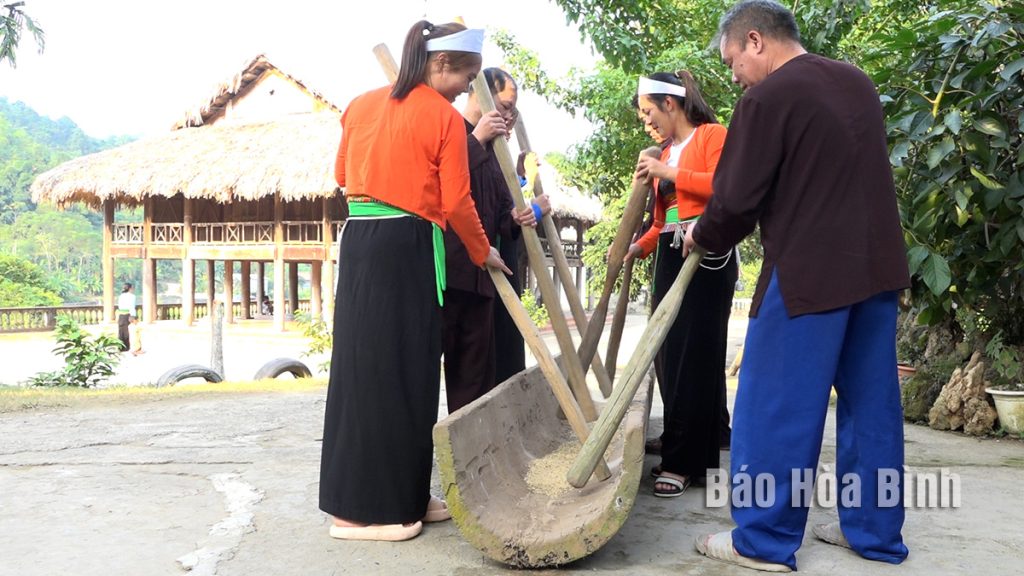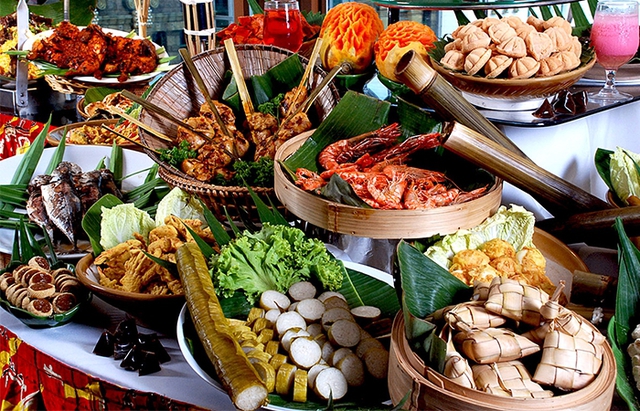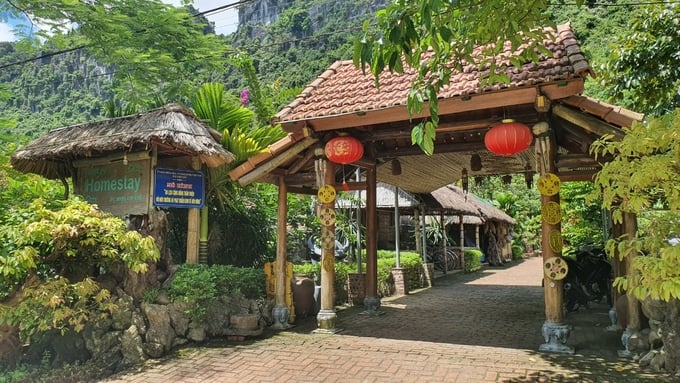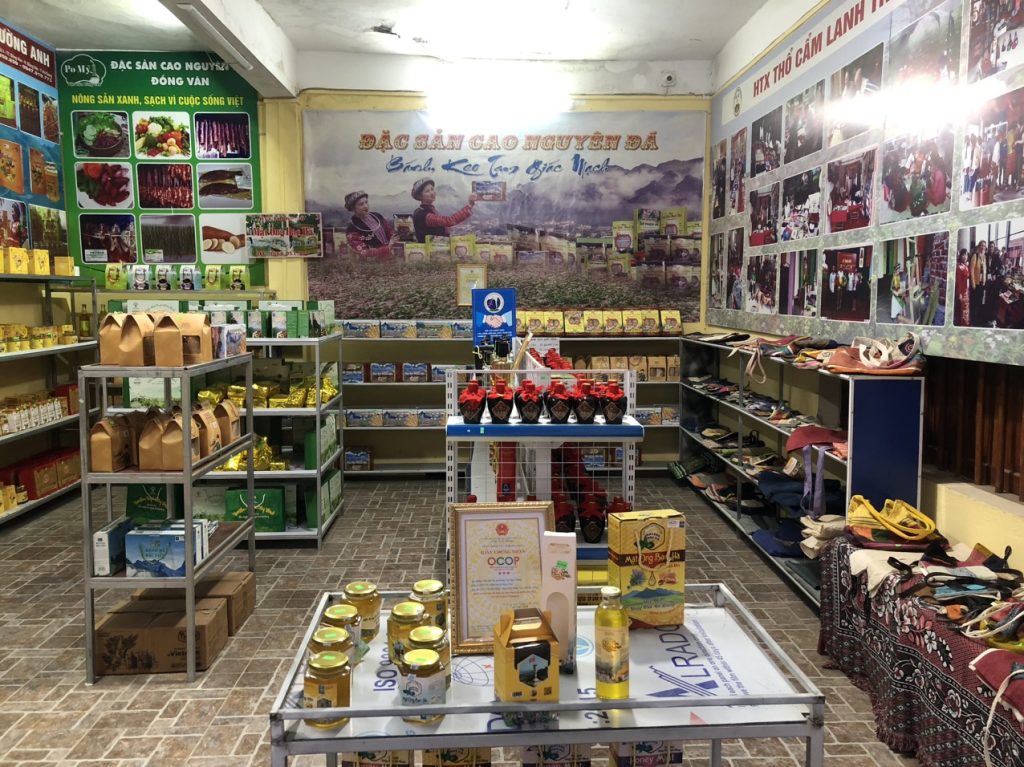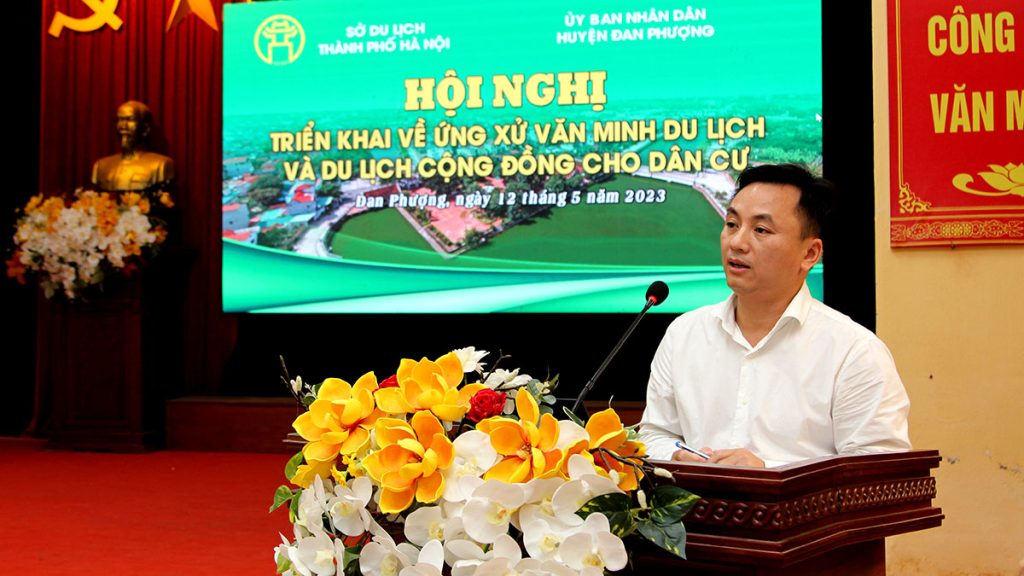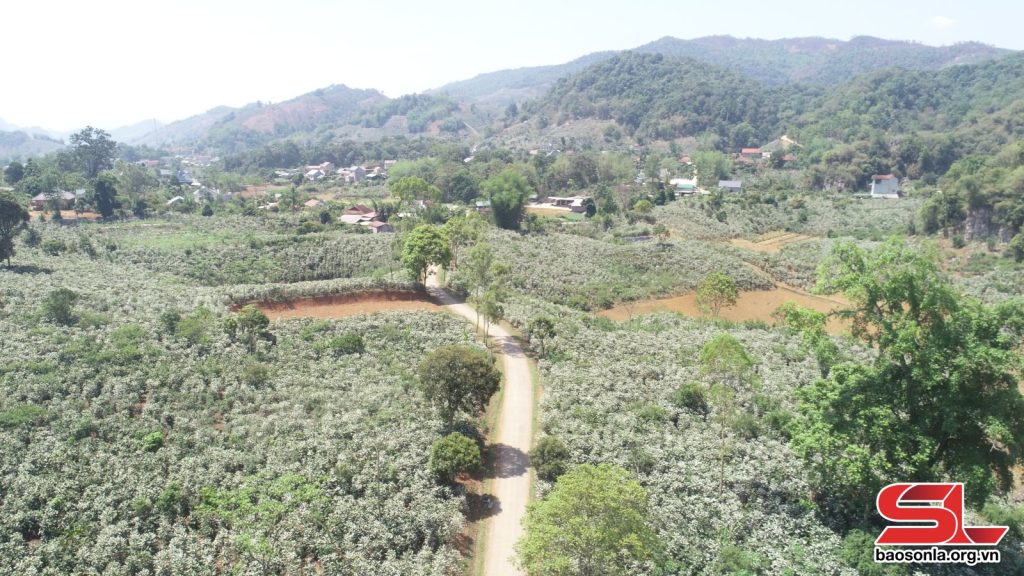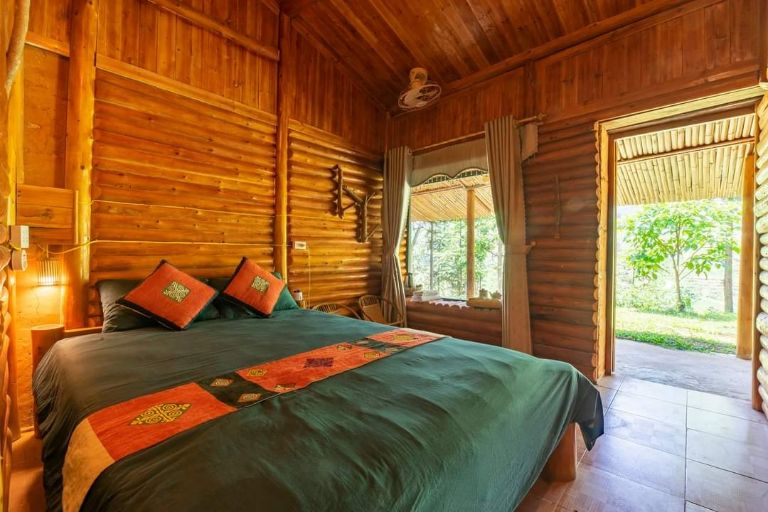Boasting poetic and charming natural landscapes, simple stilt houses deeply imbued with the Muong ethnic cultural identity, distinctive customs and lifestyle, and rich cuisine, Mo hamlet in Binh Thanh commune of Cao Phong district (Hoa Binh province) holds favourable conditions to develop community-based tourism.
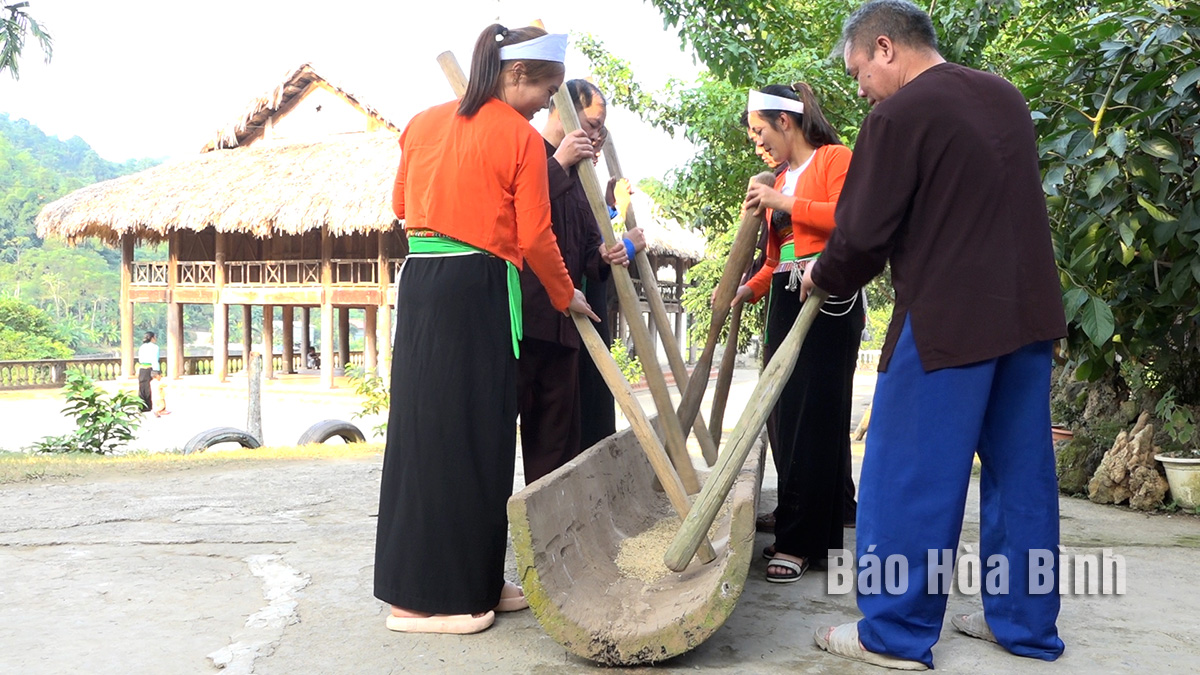
The “dam duong” (rice pounding) custom of Muong people has been revived and reenacted by members of the community-based tourism cooperative of Mo hamlet, Binh Thanh commune (Cao Phong district), to serve visitors.
Dinh Van Lan, Vice Chairman of the Binh Thanh communal People’s Committee, said that one of the important projects substantially supporting the preservation and promotion of ethnic minority groups’ traditional culture is the one on upholding and bringing into play the minorities’ fine traditional cultural values in tandem with developing tourism. This project, chaired by the Ministry of Culture, Sports and Tourism (MCST), is part of the national target programme on socio-economic development in ethnic minority and mountainous areas for the 2021 – 2025 period. To carry out the project, the Hanoi Tourism College has implemented a Muong ethnic culture experiencing and introducing model in Binh Thanh.
The initial success of this project is a good start for Mo hamlet to regain its good reputation, he said, noting that his commune hopes for the project’s continued assistance in preserving cultural values of the Muong people so as to uphold cultural characteristics and develop tourism, thereby contributing to local socio-economic development.
Mo hamlet is home to 195 households with 767 residents. Its community-based tourism cooperative was established in 2021 with 30 members. The cooperative now has two clubs working rather effectively, namely the club for collecting and introducing Muong people’s traditional culture and the one for teaching Muong folk songs and dances. Since its inception, the cooperative has served 36,218 tourists, 93.1% of them Vietnames.
Dinh Van Dan, Director of the cooperative, said they have been recovering tangible and intangible cultural heritage elements of the Muong people such as looms, watering wheels, the practice of walking on stilts, the game of “con” (cloth ball) throwing, “Mo Muong”, “Doi” calendar, gong melodies, and folk songs, so as to design new programmes for visitors to experience the rich Muong culture.
Besides, forming a cultural village in association with tourism promotion is not a new method but will help preserve and bring into play the cultural identities of ethnic groups, eliminate backward customs and social vices from the community, and encourage the adoption of a civilised and healthy lifestyle deeply imbued with local cultural characteristics to attract tourists coming to explore.
Hoang Anh Hau, Director of the Centre for Continuing Training at the Hanoi Tourism College, said in the time ahead, the school will continue proposing the MCST open more tourism training courses for local residents to help the quality of the community-based tourism site in Mo hamlet be equivalent to or higher than others’ in Hoa Binh province.
Community-based tourism is a type of tourism generating many benefits in terms of sustainable economic development for locals. It helps people to not only protect the environment but also preserve and bring into play unique cultural values of their localities, he added.
Hoa Binh Newspaper – en.baohoabinh.com.vn

